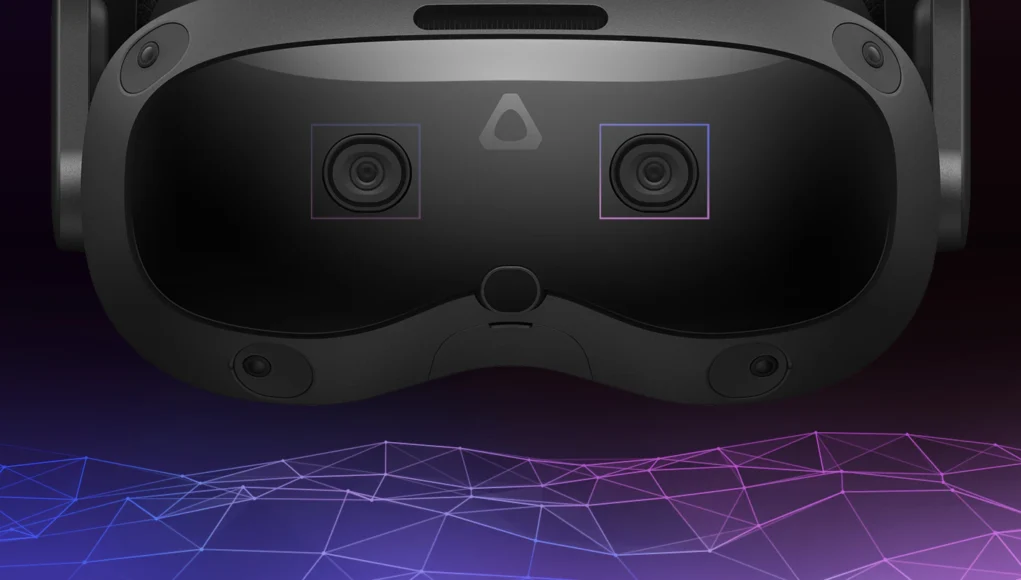HTC has announced its latest VR headset, the Vive Focus Vision, offering a significant upgrade over its predecessor, the Vive Focus 3, with enhanced features like color passthrough and improved PC tethering. Priced at $999, the Vive Focus Vision is now available for preorder until October 17th on HTC’s website.
The Vive Focus Vision can be used either as a standalone device or tethered to a PC via USB-C, giving users flexibility in how they experience VR. Building on the Focus 3’s already impressive specs, the Vision boasts the same 2448 x 2448 per-eye resolution and 120-degree field of view, powered by the Snapdragon XR2 chip. However, the new model introduces dual 16MP color cameras, enabling color passthrough for mixed-reality experiences. It also features an automatic lens adjustment system that compensates for the distance between the user’s eyes, delivering a more personalized experience.
HTC is targeting the gaming market with the Vive Focus Vision, incorporating foveated rendering, which enhances performance by focusing the headset’s graphical resources on where the user is looking, rather than rendering the entire field of view. This ensures a more immersive and efficient experience for gamers.
Additionally, the headset now supports DisplayPort via USB-C, which provides a lossless connection when tethered to a PC, ensuring high-quality visuals. An upcoming update later this year will boost the display’s refresh rate from 90Hz to 120Hz when using DisplayPort tethering, further enhancing the smoothness and responsiveness of gameplay.

The Vive Focus Vision comes with 128GB of internal storage, with support for up to 2TB of additional storage via a microSD slot, as well as 12GB of RAM, up from the Focus 3’s 8GB. This makes it better equipped for handling intensive VR applications and games.
Battery life has also been designed for longer sessions. While the main battery offers up to two hours of use, the headset includes a built-in backup battery that provides an extra 20 minutes of power, allowing users to swap out the main battery during extended play. HTC has also enhanced the cooling system, with a new fan that delivers 30% more airflow for better thermal management.

Listening to feedback from users of the Focus 3, HTC has made improvements to the headset’s durability. The head strap has been reinforced with a stronger metal hook, and the side arms and topside handling have been enhanced to address weak points in the Focus 3’s design. These upgrades are meant to withstand the wear and tear of frequent use, especially for gamers who may be more demanding on their hardware.
Unlike the more business-oriented Focus 3, the Vive Focus Vision clearly targets the consumer market, particularly gamers. HTC has positioned the headset to compete with other popular VR systems, offering Quest 2-style controllers and gaming-focused features. This move follows HTC’s broader shift toward consumer-oriented devices, including last year’s Vive XR Elite, which also featured color passthrough but at a higher price point and with lower-resolution displays.
For those who preorder the Vive Focus Vision before October 17th, HTC is offering a bonus package that includes a 5-meter USB-C cable with DP 1.4 alternate mode support, along with multiple adapters for PC VR streaming. Additionally, customers will receive a choice of three popular game bundles, making it an attractive deal for early buyers.
With its combination of high-performance features, versatile use, and a focus on gaming, the HTC Vive Focus Vision is set to be a strong contender in the consumer VR market, offering an immersive experience both as a standalone device and when tethered to a PC.










